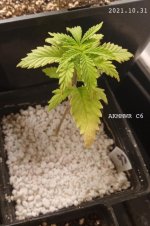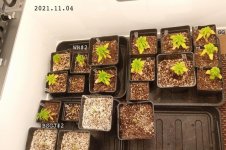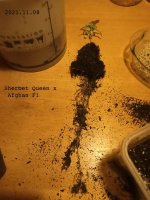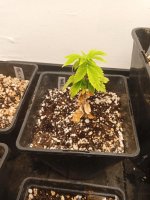aliceklar
Well-known member
Experimenting with different compost mixes. Newest repottings have between 40-60% perlite - and a control 100% pure perlite (C6, a spare from my auto project). Interested to try a coir mix too, & some mixes with even less compost.
Flowering space nearly done. Just ran some power in there, and hung a SF1000 - all fits snug. Much better for the extra headroom.
Flowering space nearly done. Just ran some power in there, and hung a SF1000 - all fits snug. Much better for the extra headroom.
















 The pen is giving suspiciously low readings for the tap water - which historically has been v hard. The water company is untrustworthy (they recently got into sh*t for dumping untreated sewage into the rivers, because it was cheaper than treating it & they only care about their shareholder bonuses) and their last reported average pH (7.5) is from 2020, so its possible that there is something else in the water currently causing the drop in pH. More research needed, as they say... but in the meantime the plants are stagnant - hardly growing, necrosis slowly progressing, still pale. Weirdly, they both give the same reading on the mineral water, which I was hoping I could use to calibrate. The strips are a blunt instrument - v limited range, and not easy to judge subtle colour differences. As the pen tested accurate with the mineral water, and the local water company are greedy sharks, I'm inclined to trust the pen rather than the aquarium strips (which are 18 months old, although still within their best before). Will collect some rainwater...
The pen is giving suspiciously low readings for the tap water - which historically has been v hard. The water company is untrustworthy (they recently got into sh*t for dumping untreated sewage into the rivers, because it was cheaper than treating it & they only care about their shareholder bonuses) and their last reported average pH (7.5) is from 2020, so its possible that there is something else in the water currently causing the drop in pH. More research needed, as they say... but in the meantime the plants are stagnant - hardly growing, necrosis slowly progressing, still pale. Weirdly, they both give the same reading on the mineral water, which I was hoping I could use to calibrate. The strips are a blunt instrument - v limited range, and not easy to judge subtle colour differences. As the pen tested accurate with the mineral water, and the local water company are greedy sharks, I'm inclined to trust the pen rather than the aquarium strips (which are 18 months old, although still within their best before). Will collect some rainwater...








